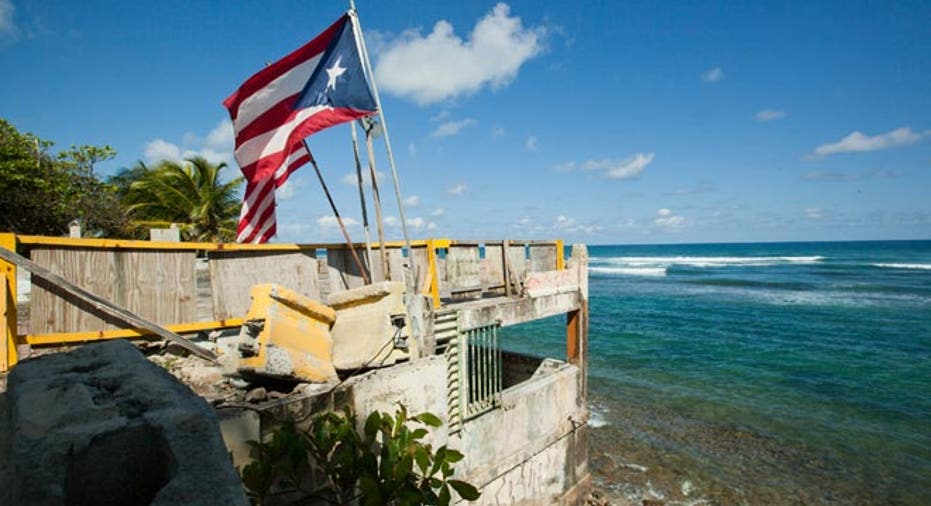How Puerto Rico’s Inability to Pay Debts Would Affect Americans and Investors

Greece may be getting the bulk of the debt-related headlines, but there is another debt story looming that may have a greater impact on Americans, at least in the short term. Puerto Rico, one of the U.S. territories, has reached an unsustainable level of debt. Puerto Rican Governor Alejandro Garcia Padilla recently declared that the government could not pay back all of the $72 billion in debt that it owes to various creditors.
Investment experts at the OppenheimerFunds disagreed, though, stating on July 6, 2015, that, “The governor’s new rhetoric, which we see as political cover after signing a budget that required unpopular spending cuts, is disappointing. The ability to pay remains intact.”
While the reasons behind the governor’s statements are debatable, the situation is at a critical stage and there are a number of outcomes possible, including bankruptcy. While states can allow cities to declare bankruptcy, as happened in Detroit, the bankruptcy law does not make any provisions for the territories. Some are urging Congress to rectify this through legislation, but many are hesitant without some means of ensuring the same fiscal problems do not arise in the future.
That leads to the big question: how did Puerto Rico get in such a mess? As always, the answer is fundamentally simple — spending is continually greater than income and extensive borrowing made up the difference.
According to the New York Times, the Puerto Rican economy began contracting almost ten years ago. Since that time, a lot of debt was incurred just to cover operating costs and corresponding budget deficits. State-run enterprises such as PREPA (Puerto Rico Electric Power Authority) absorbed a large amount of the debt.
Meanwhile, the economy is still in a serious malaise. Unemployment is over 12%, and benefit programs are relatively large compared to salaries. CBS reports that while the average take-home pay for a minimum wage worker in Puerto Rico is $1,159, government aid can supply $1,743 per month.
As more people with the means to leave Puerto Rico do so, the tax base continues to shrink and the problem spirals. 5% of Puerto Rico's population moved away within the last ten years. For those remaining, taxes and costs continue to rise, and those costs were high to begin with, given the logistics of being a smaller island territory dependent on imports.
How does this affect you, the average American? It could affect us all as taxpayers, depending on what Congress decides to do. However, there is no appetite for a straight-up bailout that would affect taxpayers across the board. Even amending the bankruptcy laws will only affect those who are invested in Puerto Rico — but as an average investor, you may have more exposure to Puerto Rico than you think.
Puerto Rican bonds have been a popular investment for years because of their "triple tax-free" status. They are exempt from federal, state, and local taxes. They are truly unique in that the exemption for all three taxes is retained even if you are not a resident of Puerto Rico. To reap the benefits in state and local taxes, you generally have to be a resident of that state and municipality.
As a result, Puerto Rican bonds are extremely popular within various funds and ETFs as a conservative component. Many funds have been watching the downgrade of bond ratings and the Puerto Rican debt issue for some time and have moved away from these bonds, but others still have significant holdings. The Associated Press reports that around 370 out of 1,884 bond funds still hold Puerto Rican debt. Further, not all Puerto Rican bonds are insured, putting holders at greater risk.
Without a clear path to discharge debt, Puerto Rico must negotiate separate deals with creditors, as they did recently to avoid default on a $415 million debt payment.
As an individual investor, check your holdings for Puerto Rican bonds, and adjust them depending on your level of risk tolerance. You don't necessarily want to jettison them, just understand what you are dealing with. Meanwhile, given unclear rules and a debt load that many economists call unpayable, go on any Puerto Rican bond-buying sprees at your own risk.
More from MoneyTips.com:Things to Consider When Purchasing BondsUnderstanding Mutual Fund InvestingClimbing the TIPS Ladder